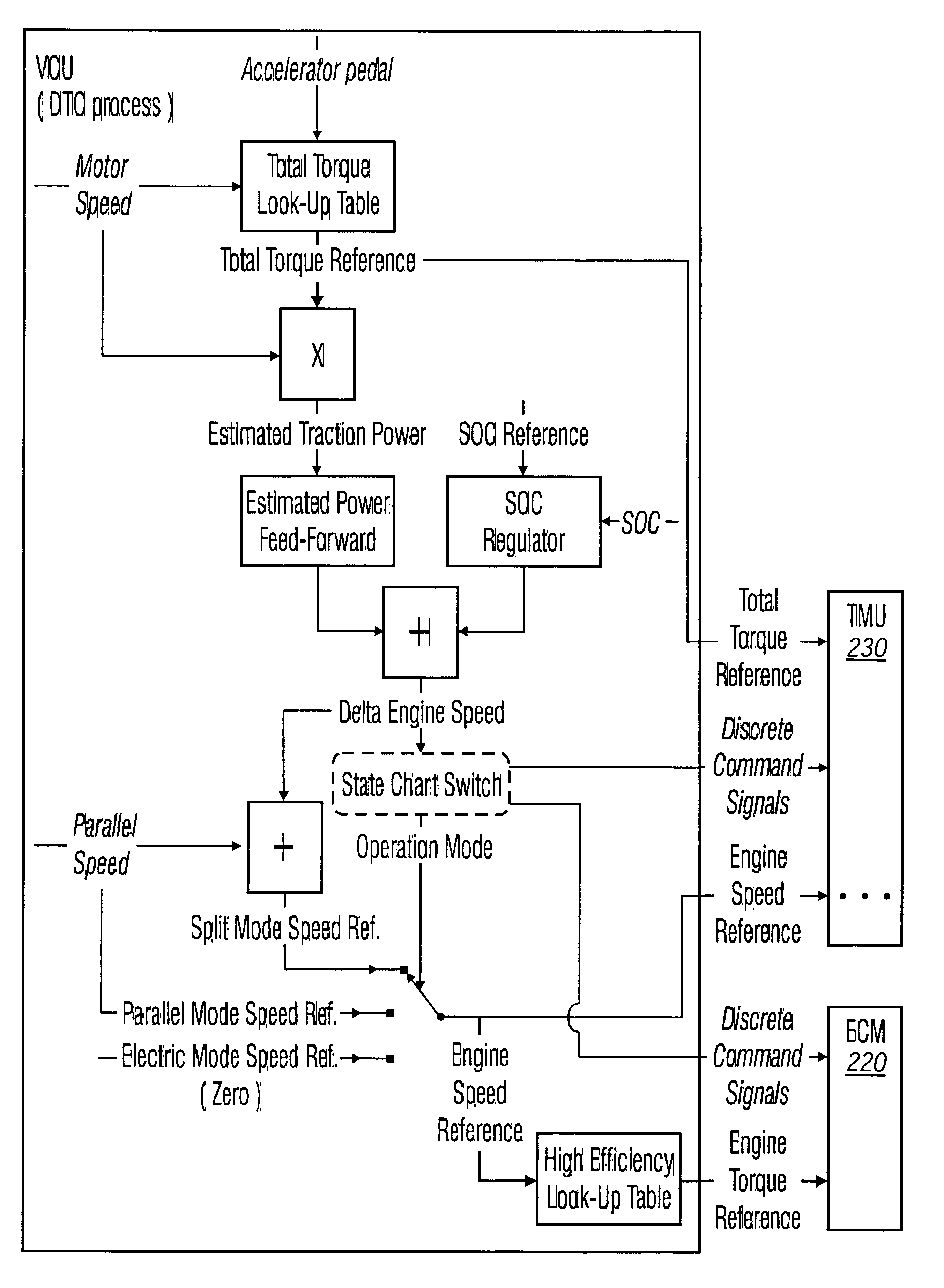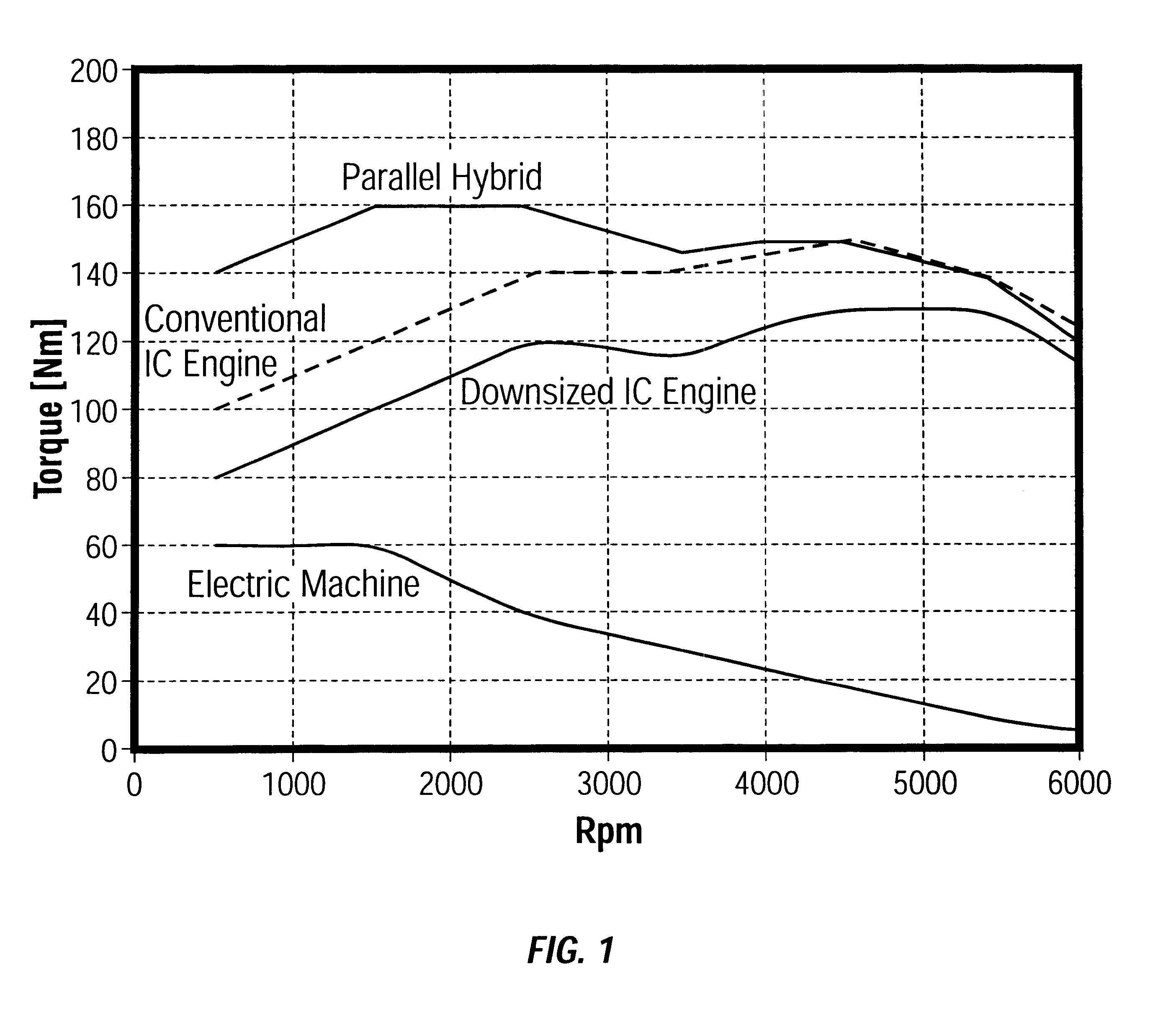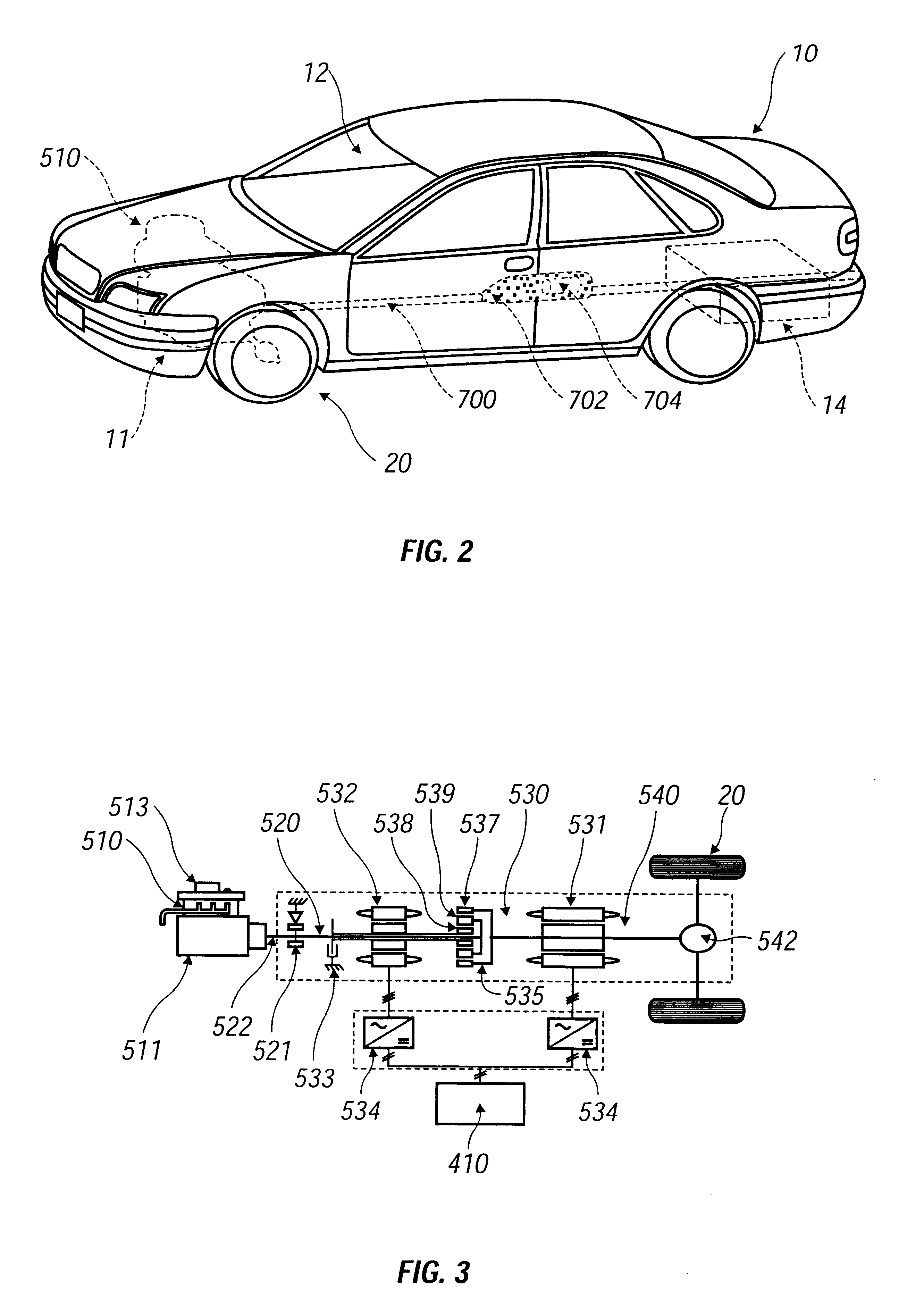Method and arrangement in a hybrid vehicle for improving battery state-of-charge control and minimizing driver perceptible disturbances
a hybrid vehicle and state-of-charge control technology, applied in the direction of electric energy management, driver input parameters, gas pressure propulsion mounting, etc., can solve the problems of loss of energy experienced, reduced use of each device in its less efficient range, and inability to choose the operating point of the engine with full freedom
- Summary
- Abstract
- Description
- Claims
- Application Information
AI Technical Summary
Problems solved by technology
Method used
Image
Examples
Embodiment Construction
As required, detailed embodiments of the present invention are disclosed herein; however, it is to be understood that the disclosed embodiments are merely exemplary of the invention(s) that may be embodied in various and alternative forms. The figures are not necessarily to scale; some features may be exaggerated or minimized to show details of particular components. Therefore, specific structural and functional details disclosed herein are not to be interpreted as limiting, but merely as a basis for the claims and as a representative basis for teaching one skilled in the art to variously employ the present invention.
As depicted in FIGS. 1 and 2, a hybrid electric transporting vehicle 10 has a power train system (having components generally designated with reference numbers from the 500's series) included therein for providing propulsion, as well as serving supplemental functions which are described in greater detail herein. Predominantly, the power train system is positioned in an ...
PUM
 Login to View More
Login to View More Abstract
Description
Claims
Application Information
 Login to View More
Login to View More - R&D
- Intellectual Property
- Life Sciences
- Materials
- Tech Scout
- Unparalleled Data Quality
- Higher Quality Content
- 60% Fewer Hallucinations
Browse by: Latest US Patents, China's latest patents, Technical Efficacy Thesaurus, Application Domain, Technology Topic, Popular Technical Reports.
© 2025 PatSnap. All rights reserved.Legal|Privacy policy|Modern Slavery Act Transparency Statement|Sitemap|About US| Contact US: help@patsnap.com



